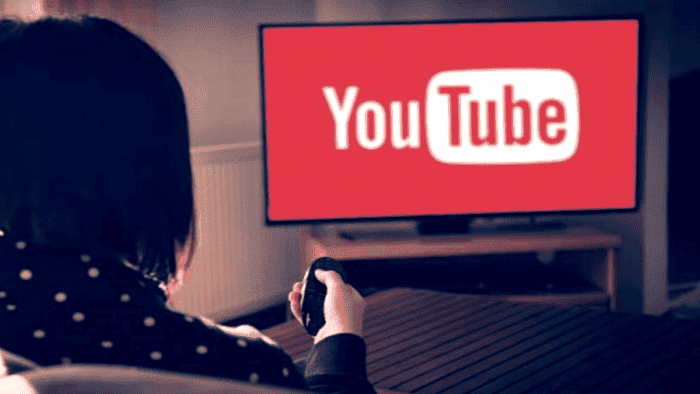YouTube has become the most popular streaming service on television in the United States, and it’s not just a local phenomenon—it’s happening around the world. What started as a website for viral videos has evolved into a platform that now surpasses even traditional streaming services. How did YouTube manage to outshine its competitors, and what makes it so successful on TV?
YouTube’s Dominance in TV Streaming: How It Became a New Kind of Television
The Rise of YouTube on TV Screens
YouTube’s rise to the top of TV streaming is impressive. Neal Mohan, YouTube’s CEO, revealed that about 150 million people in the United States watch YouTube on their TVs every month. They’re not watching different content from what they see on their phones. It’s the same mix of music videos, challenges by popular creators like Mr. Beast. And even short vertical videos known as Shorts, which are similar to TikTok.
For 17 months straight, YouTube has been the number one streaming service on TV, according to Nielsen, a company that tracks TV viewership. In June 2024, YouTube’s share of streaming time on TV reached 9.9%. Setting a new record for any streaming platform in the United States. These numbers are even more remarkable because they don’t include people watching on other devices like smartphones, tablets, or computers, or through the YouTube TV app.
This shift toward YouTube on TV highlights a major change in how people consume content. While traditional TV networks and other streaming services still have their audience, YouTube has found a way to appeal to a wide range of viewers with its variety of content. What began as a site for viral videos has grown into a major player in TV streaming. Showing YouTube’s ability to innovate and adapt.

A New Kind of Television for a New Generation
The COVID-19 pandemic played a big role in YouTube’s growth on television. With people spending more time at home, many turned to YouTube for entertainment, learning, and staying connected. Even after lockdowns ended, this trend continued, proving that YouTube’s appeal wasn’t just a temporary response to the pandemic. The platform offers a relaxed and personalized TV experience that resonates with many viewers, especially younger ones who might not be as interested in traditional TV.
Neal Mohan believes that YouTube’s success comes from giving content creators the freedom to decide what to produce. In an interview with The New York Times, Mohan said, “The creators of Qur are much better at anticipating what our fans and audiences want. This is television remade for a new generation.”
This approach has particularly struck a chord with younger audiences. Nielsen’s data shows that nearly 48% of YouTube’s TV audience is under the age of 34. This highlights how YouTube appeals to a younger generation that values diverse and authentic content over the polished productions of traditional TV.
YouTube’s wide range of content has also made it a favorite among minority communities. Black, Asian, Hispanic, and Spanish-speaking households, in particular, have found content on YouTube that they can’t easily find on U.S. television. Brian Fuhrer, Nielsen’s senior vice president of product strategy, explained, “It’s so broad — that’s what’s driving its strength. There’s something for every demographic and every race and ethnicity, all the time.”
Creative Freedom and a Smart Business Model
One of the key reasons for YouTube’s success in TV streaming is its unique business model. Unlike traditional TV networks and streaming giants like Netflix, YouTube relies heavily on independent creators to produce content.
YouTube gives creators the freedom to make and share content without the restrictions often found in traditional media. This creative freedom has attracted a vast number of content producers, from individuals making videos at home to more established creators with professional setups. Unlike traditional broadcasters or streaming services, YouTube doesn’t have to spend billions on producing content. Instead, it shares revenue with creators, giving them 55% of the ad revenue generated by their videos. This model has been very successful. Encouraging creators to produce high-quality content while keeping financial risks for YouTube to a minimum.
YouTube’s approach to financial investment is also efficient. While Netflix spends around $17 billion a year on content, YouTube uses its network of independent creators to generate content with far less direct investment. Over the past three years, YouTube has paid out $70 billion to creators and partners. However, this payout only happens after YouTube has made a similar profit. Ensuring that the platform remains financially strong without taking on significant risks.
What’s Next for YouTube in TV Streaming?
As YouTube continues to grow, its role in the TV streaming landscape is likely to become even more significant. The platform’s ability to cater to a wide range of tastes and preferences, combined with its global reach and innovative content strategies, has made it a major player in the entertainment industry. YouTube’s success on TV reflects a broader trend in media consumption, where audiences are increasingly looking for content that is personalized, diverse, and easy to access.
Looking ahead, YouTube’s focus on supporting its creator community and expanding its content offerings will likely sustain its growth. The introduction of new features like Shorts, which caters to the growing demand for short-form content, and the continued development of YouTube Music and YouTube Studio, ensures that the platform remains relevant and competitive.
In conclusion, YouTube’s journey from a site for viral videos to the leading streaming service on U.S. television is a remarkable story of innovation, adaptability, and smart strategy. By empowering creators, embracing diverse content, and maintaining a flexible business model, YouTube has not only transformed television but has also redefined what it means to be a streaming service in the digital age. As the platform continues to evolve, its influence on how we watch TV is likely to grow. Shaping the future of entertainment for years to come.



